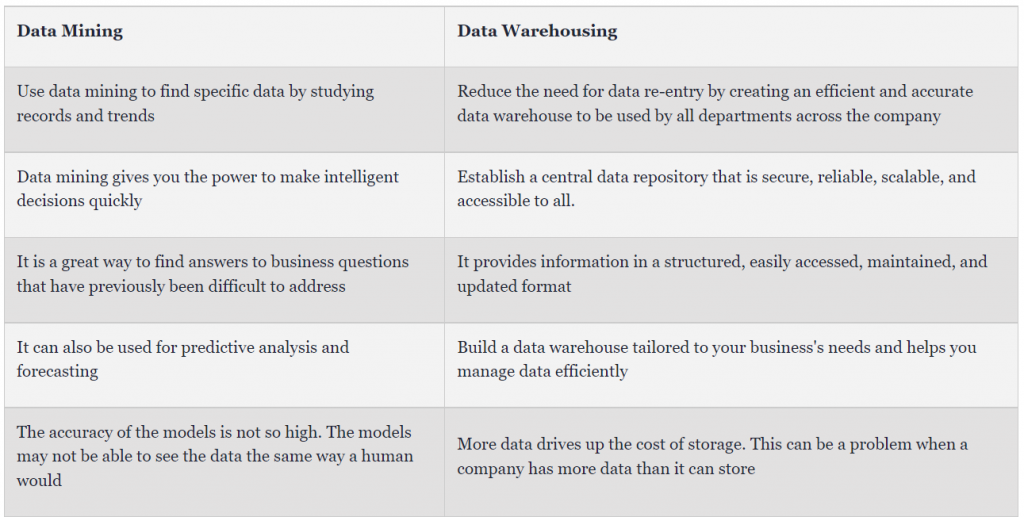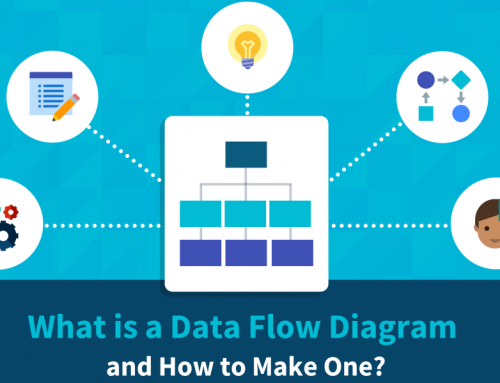Difference Between Data Mining and Data Warehousing
Data mining and data warehousing are two essential processes for any organization looking to gain recognition on a global or national level. Both technologies help prevent data fraud and improve management statistics and rankings. Data mining is used to detect significant patterns by relying on the data collected during the data warehousing phase. Though data mining and data warehousing are both considered part of data analysis, they work in different ways. In this article, we’ll explore the differences between the two and whether one can exist without the other.

Difference Between Data Mining and Data Warehousing
Data Mining
Data mining, which involves looking at large data sets and finding patterns, is a subset of data science used in various fields, including marketing, finance, and engineering. Data mining can be done manually or by using automated systems, and open source software frameworks like Hadoop allow you to store, access, and manage your data.
Data mining uses artificial intelligence software to look at large amounts of data. It uses machine learning algorithms to analyze sales data over time to find patterns in the data. They then made predictions about future events based on these patterns.
Despite the complexity of machine learning algorithms, model deployment is a simple process compared to algorithm training. Deploying a model involves, for example, transforming the model into a different format and loading it onto the intended machine.
Many popular machine learning algorithms use transfer learning. This means that you can deploy the model on any system. Continuous deployment allows the device to relearn the schema and its schema for each new schema.
More and more industries are looking for ways to use data mining capabilities. Data mining consists of three phases: data preparation, model building, validation, and deployment. These capabilities allow information to be collected and analyzed to make better decisions and policies.
Some businesses record and analyze user information, while others use data mining capabilities to analyze trends. For example, some companies may decide to mine data from users to determine which products they should sell.
By mining data and analyzing trends, they can see which products are popular and make more to ensure they meet customer needs. Data mining capabilities are a great way to collect and analyze data.
Data Warehousing
A data warehouse stores data in one place so that more people can access, share and use it. The data warehouse is based on a relational database management system (RDBMS). It is designed to structure data into tables and make it easy for users to query them.
A data warehouse stores all relevant business information about your company. For example, the customer’s name and address, product information for each order they place, or monthly sales figures.
A good example is Google Search Console, which allows you to analyze your website’s performance across multiple dimensions. These dimensions include traffic sources, user behavior patterns, and more.
The RDBMS tracks all changes to each row in the table. If you make edits or insert new records in one of the tables, all other copies will automatically reflect those changes.
There are three main types of data warehouses, each with its own distinct capabilities:
- Sales and marketing departments use data marts to collect data from sources such as customers and reviewers.
- An Enterprise Data Warehouse is a centralized database that combines all departments within an organization. They are at the heart of decision support systems.
- The operational data store contains user data and is frequently updated. They work for employees.
Difference Between Data Mining and Data Warehousing


Conclusion
Thank you for reading our article and we hope it can help you to have a better understanding of the difference between data mining and data warehousing. If you want to learn more about data mining and data warehousing, we would like to advise you to visit Gudu SQLFlow for more information.
As one of the best data lineage tools available on the market of 2022, Gudu SQLFlow can not only analyze SQL script files, obtain data lineage, and perform visual display, but also allow users to provide data lineage in CSV format and perform visual display. (Published by Ryan on Aug 10, 2022)
If you enjoy reading this, then, please explore our other articles below:



